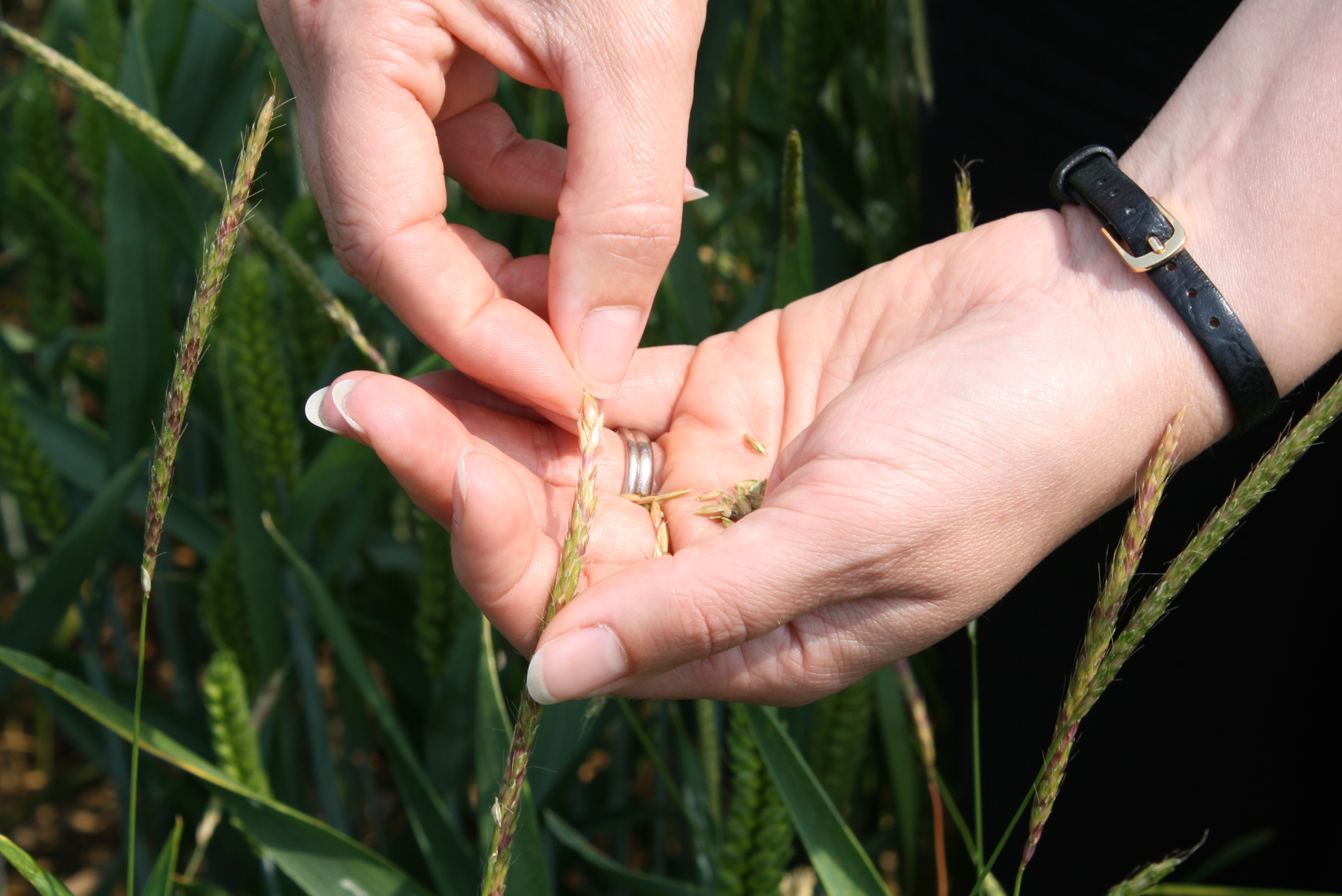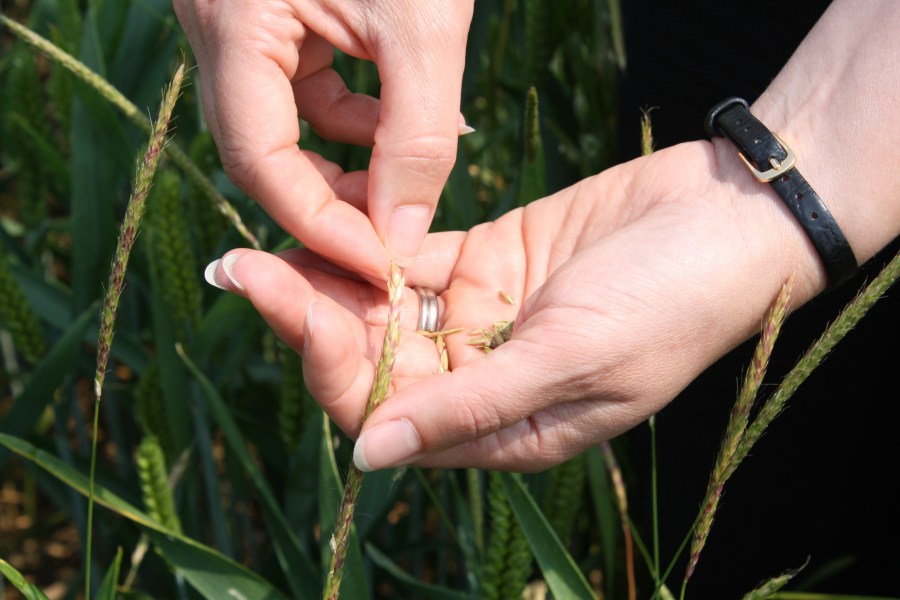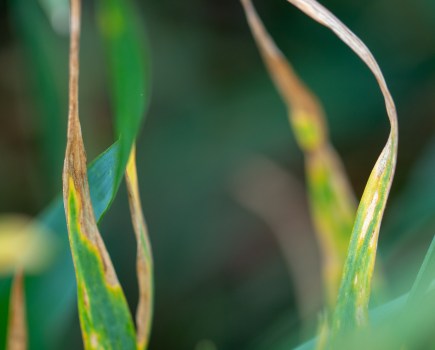
CPM finds out more about new trials from one a leading agronomy company which promises a fascinating insight into the role of strong crop competition for tackling blackgrass.
Drill technology, seed rates and variety characteristics are all under the spotlight at the Mollington site, set up two years ago to build on techniques developed at the Hutchinsons Blackgrass Centre of Excellence in Brampton, Cambridgeshire.
Well established crops sown at the right seed rate can play a significant part in a blackgrass control program through crop suppression to reduce blackgrass numbers. Yet this can be overlooked amidst the many cultural and chemical techniques employed for blackgrass control, says Hutchinsons agronomist and Mollington trials manager, Toby Kellie.
“Delayed drilling is undoubtedly an important part of blackgrass control, but there’s a balance to be found between drilling late and not compromising crop establishment and vigour,” he says.
“We can’t afford to give blackgrass the space to grow and tiller, which is why we need to better understand crop physiology to maximise its competitiveness and find practical ways to improve establishment and vigour.”
Drill head-to-head
A central part of this season’s work is a trial examining how different drills affect crop establishment and blackgrass competition on the heavy land site.
Four machines are being compared in tramline plots of Skyfall sown after oilseed rape in the last week of October at 450 seeds/m2. These include a Weaving GD, Sky EasyDrill, Horsch Sprinter with narrow dutch openers band seeding and the farm’s own Väderstad Rapid Disc Drill.
“A similar drill comparison in spring barley two years ago clearly showed how the stronger crop establishment achieved with some machines suppressed blackgrass and reduced overall numbers. We want to see if there’s any similar effect in winter wheat,” says Toby.
Detailed recording of crop physiology and blackgrass throughout the season will help highlight any differences.
All plots have been sown directly into rape stubble that was allowed to green-up after harvest before being sprayed off with glyphosate ahead of drilling.
“Direct drilling certainly has a good place in some circumstances, but it is not the only answer,” Toby adds.
“Light cultivations of the top two inches are still important for blackgrass management, so the focus should be on ‘conservational cultivation’ and tailoring choices to specific situations and seasons.”
Wheat variety comparison
Another trial is examining how certain variety traits affect the competitiveness of four leading Group 4 feed wheats against blackgrass.
Skyscraper, Sundance, Costello and Crispin were all sown at the end of October, at two different seed rates – 400/m2 and 500/m2.
Each variety offers strong agronomics and good local marketability, but potentially have different characteristics that could influence blackgrass control, says Mr Kellie.
Skyscraper, for example is very tall and high yielding, Sundance has renowned tillering ability, and Crispin is a tall, very vigorous variety that suits late drilling. Costello is a popular variety but has relatively short straw, so is used as the control to show the effect of lack of crop competition.
“It’s not about telling people what they should or shouldn’t grow, but looking in more detail at the physiological characteristics that can sometimes be overshadowed by yield and agronomic criteria when planting decisions are made.”
The variety trial is on land following potatoes, so is likely to be under high blackgrass pressure due to deep soil movement disturbing and encouraging more blackgrass seeds to emerge, which will put the varieties to the test, he notes.
Spring drilling demo
The final part of this season’s focus on crop competition will be a head-to-head comparison of leading drills for sowing barley next spring.
Following this autumn’s drill trial and a successful demo in spring 2017, another demonstration day is planned for early March to feature machines including a Sky EasyDrill, SlyAgri Boss, Weaving GD, John Deere 750A, Moore Unidrill, Amazone Cayenna, Mzuri Protill, Claydon Hybrid, Horsch Sprinter and Väderstad Rapid.
“Every machine works slightly differently, so it will be a great opportunity to see how drill technology affects crop establishment and black-grass pressure at this site,” says Toby.
“From the results, a few drills will then be utilised again to further prove their potential next autumn in a field known for high blackgrass pressure, which will go into wheat after rape having followed a double spring barley break.
“Again, with all of these trials we’re not trying to produce a blueprint for what growers should do, but simply provide extra information and knowledge to help everyone make more informed decisions.
“We can’t afford to standstill against blackgrass or any in aspect of agronomy, so have to keep learning and trying new things.”
For more information on the trials and next year’s demonstration event, please contact the Banbury office on 01295 680872 or email banbury@hlhltd.co.uk




